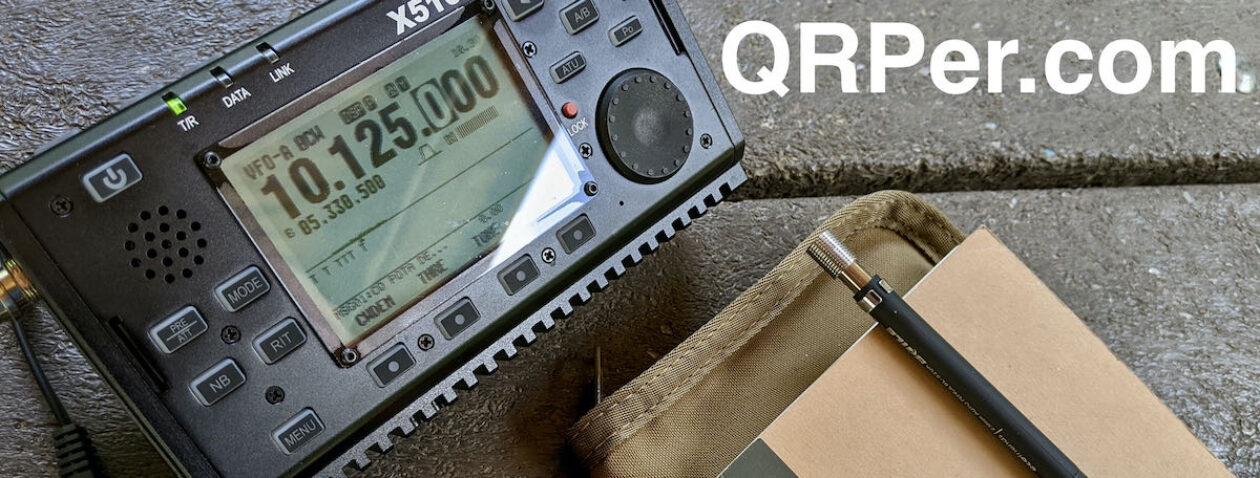Many thanks to Joe (N0LSD) who shares the following guest post:
Independence River Wilderness – Adirondacks, NY
by Joe (N0LSD)
A recent family engagement offered me the perfect opportunity to travel to a part of my state I rarely get the chance to visit.
This trip would be a single over-nighter, but allow for the activation of three POTA entities by hitting two different locations. One stop would be a two-fer, while the other location would be a single-park activation. Additionally, this trip would offer the potential for ‘late-shift’ contacts: always a nice feature of overnight activations.
The Planning
In northern New York lies a vast, 6-million acre (over 2.4 million hectare) area that has been set-aside in the State’s constitution as protected land, and half of this area contains wildernesses that are meant to be kept ‘forever wild’. This area, known as the Adirondack State Park, is fully 20% of the land area of the state of New York, and constitutes the largest area of state-protected land in the United States.
By way of comparison, one could fit Yellowstone, Grand Canyon, Yosemite, Everglades, and Great Smoky National Parks all within the Adirondack State Park boundary – at the same time. (Wood-Tikchik State Park, in Alaska, has more *contiguous* protected land, at 1.6-million acres, and the Alaskan National Wildlife Refuge is the largest Federally-protected area.)
My goal was to probe the very western edge of this region. Situated east-southeast of the town of Lowville, NY are two parks that straddle the Blue Line, which serves as the official border of the Adirondack Park itself.
To the west is the Independence River State Forest (POTA US-5067): this park falls outside the Blue Line. Bordering this park to the east is Independence River Wild State Forest (POTA US-10295) – which falls within the Blue Line, and thus within the border of the Adirondack Park (POTA US-2001).
My Amateur operations over the last number of years have been primarily utilizing digital modes; however, because the destination is a place I can seldom travel, and solar activity has been unkind to the HF bands as of late, I’d not leave anything to chance.
This meant having the ability to activate these parks via SSB Voice, if necessary. I’ve been activating parks with the TruSDX, because it is a light-weight radio. In addition to carrying this, however, I also took the Xeigu G90, and a Bioenno 12Ah battery. A good bit of extra weight, but it provided a bit of insurance against the possibility of a failed activation attempt.
On Arrival
 In Desert Solitaire, Edward Abbey, one of the great writers of the 20th Century, wrote, “In the first place you can’t see anything from a car; you’ve got to get out of the [G.D.] contraption and walk, better yet crawl, on hands and knees, over the sandstone and through the thornbush and cactus. When traces of blood begin to mark your trail you’ll begin to see something, maybe. Probably not.”
In Desert Solitaire, Edward Abbey, one of the great writers of the 20th Century, wrote, “In the first place you can’t see anything from a car; you’ve got to get out of the [G.D.] contraption and walk, better yet crawl, on hands and knees, over the sandstone and through the thornbush and cactus. When traces of blood begin to mark your trail you’ll begin to see something, maybe. Probably not.”
 Map reconnaissance showed it would probably be feasible to drive through the Independence River State Forest park on a forestry road, then hike a couple miles further into the Independence River Wild State Forest along established trails to make camp on Little Otter Lake. This would be my overnight location and first activation opportunity – a two-fer, as this place lies entirely within the Adirondack Park border. This would put my vehicle at a midpoint between the two POTA entities.
Map reconnaissance showed it would probably be feasible to drive through the Independence River State Forest park on a forestry road, then hike a couple miles further into the Independence River Wild State Forest along established trails to make camp on Little Otter Lake. This would be my overnight location and first activation opportunity – a two-fer, as this place lies entirely within the Adirondack Park border. This would put my vehicle at a midpoint between the two POTA entities.
I tend to pour over maps in preparation for trips like this, but I know better than to trust maps implicitly, especially in the wilderness. A couple enterprising beavers can turn a whole forest into a pond; and a stroke of a pen in a far-away capital can make a road disappear back into the woods within a few short years. Topology rarely changes, but what is on that topology can only be trusted once one sets eyes on it. Continue reading Joe’s Adirondack Adventure: POTA activations in the Independence River Wilderness






